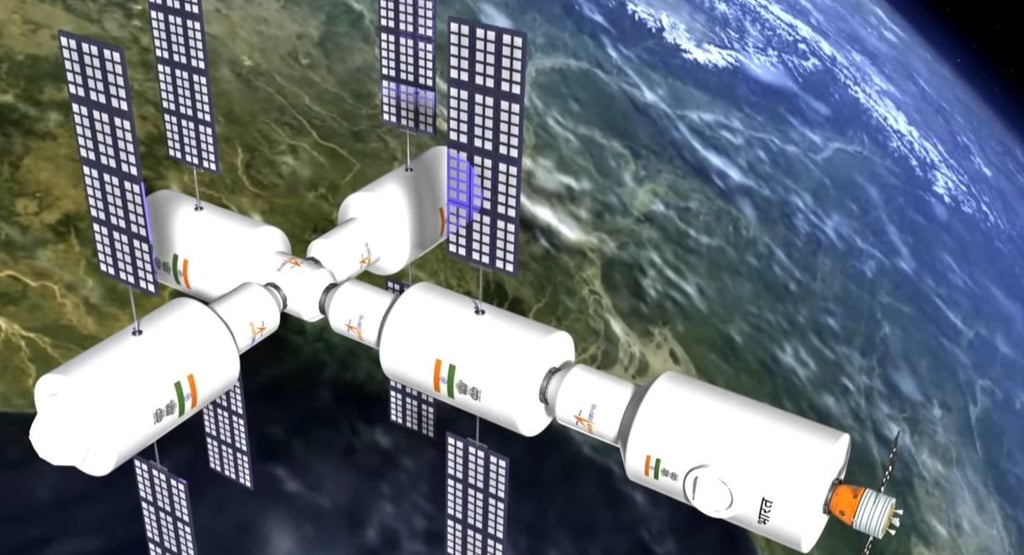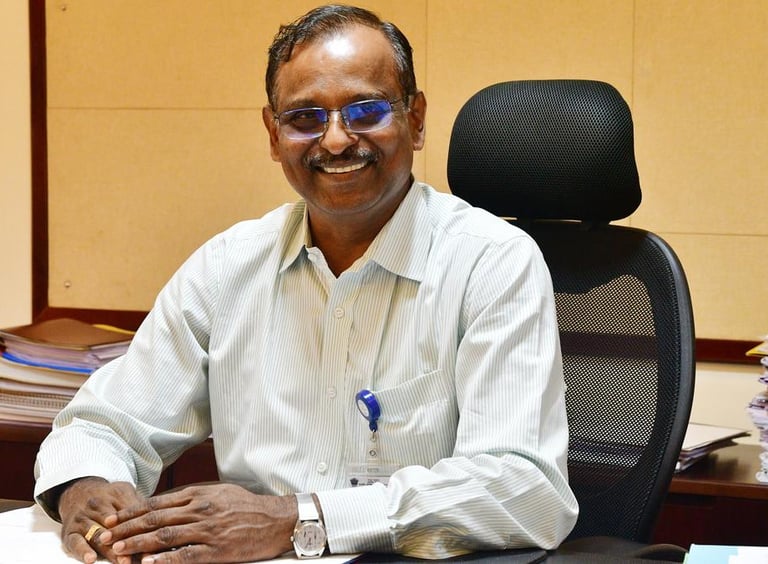India’s Space Station Dream: First Module by 2028, Full Station by 2035
The Indian Space Research Organisation (ISRO), known for its precision and innovation, has announced that the first module of this space station will be launched by 2028. The full station, made up of five interconnected modules, is expected to be fully assembled and operational by 2035.
TECHNOLOGYNATIONAL
Thinkbrief
7/19/20254 min read


India has always been a country that dreams big, and now one of its most exciting dreams is slowly becoming a reality — building its own space station. Called the Bharatiya Antariksh Station (BAS), this project marks a new chapter in India’s space journey, one that could soon place Indian astronauts in a permanent home above Earth.
The Indian Space Research Organisation (ISRO), known for its precision and innovation, has announced that the first module of this space station will be launched by 2028. The full station, made up of five interconnected modules, is expected to be fully assembled and operational by 2035.
This isn’t just another scientific milestone. It is a bold vision of where India is heading, not just participating in space exploration but shaping its future. For ISRO and countless young dreamers across the country, this space station represents years of hard work, learning and the spirit of self-reliance.
The first piece of the station, called BAS 1, will be a small but powerful robotic module. Weighing about eight tonnes, it will be launched using India’s current heavy rocket, the LVM 3. This module will act as the base for future additions, making sure systems like power, communication and temperature control work smoothly in space.
Over the next several years, ISRO plans to send up four more modules including a central core, a laboratory, a research area and a working space for astronauts. Once complete, the station will be able to host three astronauts at a time for stays of about 20 days. It will orbit around 400 kilometers above Earth, providing a platform for science, technology and international cooperation.
To make all this possible, ISRO is also developing a brand new rocket called the Next Generation Launch Vehicle (NGLV). It is designed to carry heavier payloads and is expected to be ready by 2035, just in time for the final stages of space station assembly. This rocket will allow India to launch larger modules into space without depending on foreign partners.
The station is not being built overnight. It is the result of years of preparation, learning from earlier missions and building critical technologies. In 2025, ISRO successfully carried out the SPADEX experiment which showed that two spacecraft could dock and separate in space, a key step in building a modular station. ISRO is also developing the Bhartiya Docking System, a tool that will let different modules connect in orbit just like pieces of a puzzle.
This space station is closely linked to India’s growing human spaceflight program, especially the Gaganyaan mission. Expected to carry Indian astronauts into space by 2027, Gaganyaan is more than just a historic first. It is a training ground for long term missions like those that will happen on BAS. Before that happens, ISRO will run a series of test missions to make sure everything is safe for the crew, from life support systems to emergency procedures.
But what makes a space station truly special is not just its structure. It is what it allows us to do. Having a station of our own means Indian scientists can carry out research in space, from studying how the human body reacts to zero gravity to testing new medicines or growing food in orbit. These are the kinds of breakthroughs that could improve life back on Earth.
The timing is important too. The International Space Station, which has been orbiting Earth for more than two decades, may be retired by 2030. India’s station could step in to fill that gap, giving scientists around the world another place to work together in space.
Of course, big dreams come with big challenges. Running a space station means developing strong life support systems, planning regular resupply missions and training astronauts for long stays in space. India’s experience with short duration missions is growing, but sustained presence in space is a far more complex undertaking. Technological readiness, funding stability and infrastructure expansion will be key factors in meeting the 2035 target.
ISRO officials have acknowledged these challenges but remain confident. The station project is being designed in phases to allow gradual development and integration of technologies. Learning from the ISS, India is focusing on modularity and flexibility. The station will be built piece by piece in orbit and lessons from each phase will guide the next.
Importantly, the Bharatiya Antariksh Station is not just about science and national pride. It is also about building a space ecosystem, inspiring young scientists, creating jobs in high tech sectors and demonstrating India's capability to carry out complex multi decade space missions. It marks the transition of India’s space program from a launch service provider to a full spectrum space power.
International collaboration is also on the table. ISRO has said it is open to working with foreign agencies for shared research aboard the station. This approach could help reduce costs, bring in technical expertise and strengthen diplomatic relations through scientific cooperation.
In summary, India’s plan to launch its first space station module by 2028 and build a complete five module station by 2035 is not only ambitious but also achievable. Backed by years of groundwork through the Gaganyaan program and related technology demonstrations, ISRO is well positioned to deliver. The Bharatiya Antariksh Station could become a cornerstone of India’s space ambitions, giving the country an independent platform for research, innovation and strategic leadership in Earth’s orbit.

